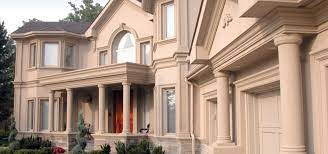Stucco Molding: Enhancing the Aesthetics of Your Home

Stucco molding, also known as stucco trim or stucco moulding, is an architectural element that adds a touch of elegance and sophistication to the exterior of a building. It is a decorative feature that not only enhances the aesthetics but also provides functional benefits. Stucco molding can be found in various styles and designs, allowing homeowners to choose the one that best suits their preferences and complements the overall architectural style of their home. In this article, we will explore the different types of stucco molding, its installation process, and the benefits it offers.
Types of Stucco Molding
Stucco molding comes in various types, each with its own unique characteristics and installation methods. The four main types of stucco molding are:
1. Architectural Moulding: This type of stucco molding is designed to mimic traditional wood moulding but with added benefits. It is lighter in weight, making it easier to handle during installation . Unlike wood, architectural moulding does not warp, rot, or split, making it a low-maintenance option for homeowners .
2. Exterior Trim: Stucco exterior trim is specifically designed to enhance the architectural details of a building. It can be used to accentuate windows, doors, and other exterior features, adding depth and visual interest to the overall design . Exterior trim is available in various styles and sizes, allowing homeowners to customize their stucco molding according to their preferences.
3. Cornices: Stucco cornices are decorative moldings that are installed at the junction between the roof and the walls. They add a touch of elegance and grandeur to the exterior of a building . Cornices are available in different profiles and sizes, allowing homeowners to choose the one that best suits their architectural style.
4. Sills and Bands: Stucco sills and bands are horizontal moldings that are installed at the base of windows and doors or as decorative bands around the building . They not only enhance the visual appeal but also provide a protective barrier against water infiltration.
Installation Process
The installation process of stucco molding may vary depending on the type and design chosen. However, there are some general steps that are followed:
1. Preparation: Before installing stucco molding, it is essential to prepare the surface by cleaning it thoroughly and ensuring it is free from any debris or loose material. This will ensure proper adhesion of the stucco molding to the surface.
2. Measurement and Cutting: Accurate measurements are taken to determine the length and width of the stucco molding required. The molding is then cut to the desired size using appropriate tools.
3. Application of Adhesive: A suitable adhesive is applied to the back of the stucco molding, ensuring even coverage. The molding is then pressed firmly against the surface, ensuring proper alignment.
4. Securing: To ensure a secure installation, nails or screws may be used to hold the stucco molding in place until the adhesive dries completely. Care should be taken to avoid overdriving the fasteners, as it may damage the molding.
5. Finishing: Once the stucco molding is securely installed, any gaps or joints are filled with caulk or stucco patching material. This ensures a seamless and finished look.
Benefits of Stucco Molding
Stucco molding offers several benefits that make it a popular choice among homeowners:
1. Enhanced Aesthetics: Stucco molding adds a touch of elegance and sophistication to the exterior of a building. It enhances the architectural details, giving the building a more polished and refined look.
2. Durability: Stucco molding is designed to withstand harsh weather conditions, including extreme temperatures, moisture, and UV rays. It is resistant to rot, warping, and splitting, making it a long-lasting option for homeowners .
3. Low Maintenance: Unlike traditional wood moldings, stucco molding requires minimal maintenance. It does not need to be painted or stained regularly and can be easily cleaned with mild soap and water.
4. Versatility: Stucco molding comes in various styles, sizes, and designs, allowing homeowners to choose the one that best suits their preferences and complements the architectural style of their home. It can be customized to create unique and personalized designs.
Conclusion:
Stucco molding is a versatile and durable architectural element that enhances the aesthetics of a building. With its various types and designs, homeowners can choose the stucco molding that best suits their preferences and complements the overall architectural style of their home. Its installation process is straightforward, and it offers several benefits, including enhanced aesthetics, durability, low maintenance, and versatility. Whether used as exterior trim, cornices, sills, or bands, stucco molding adds a touch of elegance and sophistication to any building.






